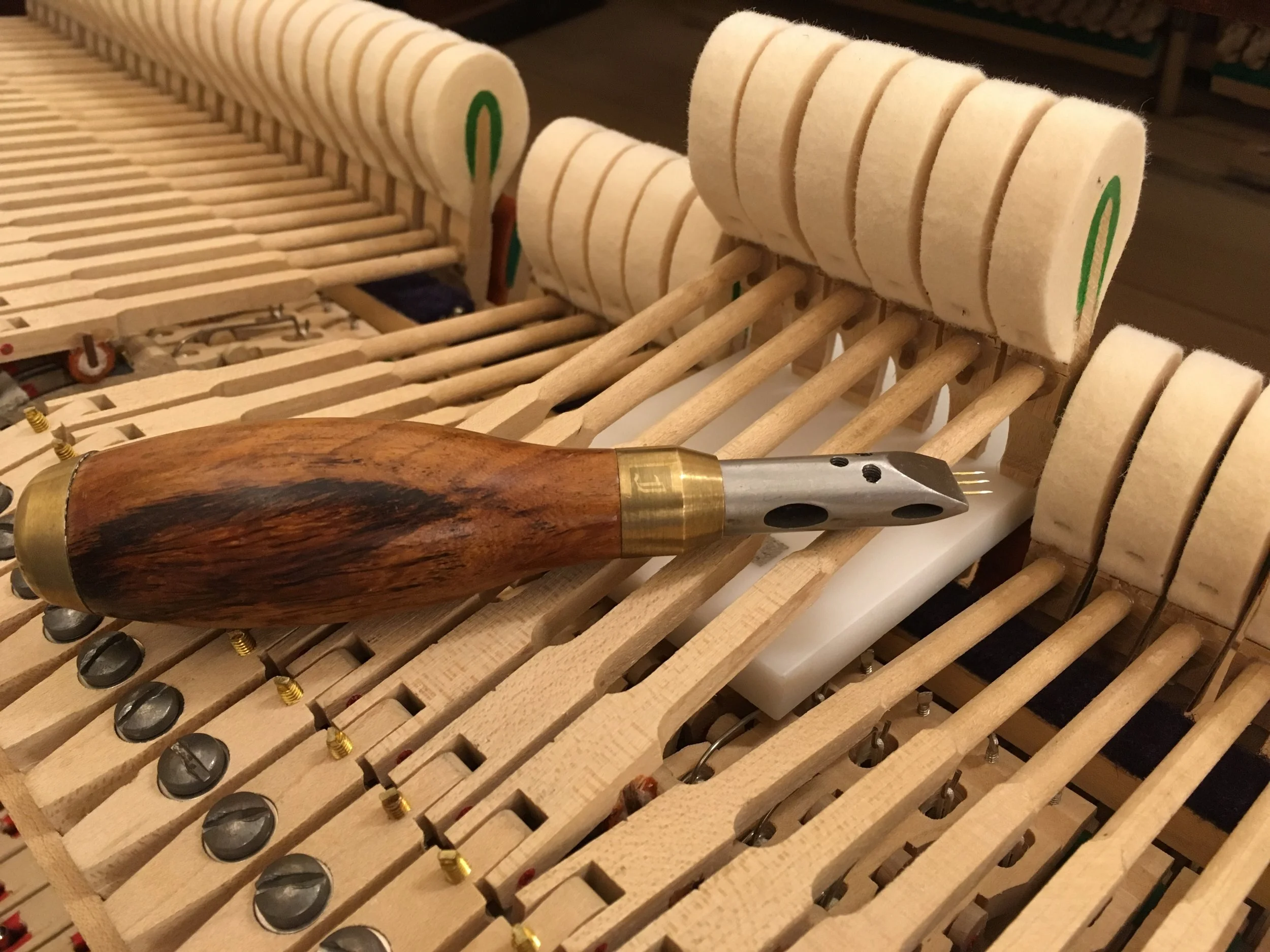If you have played on more than one piano in your lifetime then you likely understand that pianos have individual sound. For example, some pianos have a very harsh and metallic sounding tone and are difficult to play softly. Others are very muted and difficult to play loudly. Then, there are pianos of every variation in between.
Some people prefer a warm sounding piano while others prefer a brighter sounding piano. Different types of music also have their own requirements for the tone of the piano. How are these different tone qualities achieved? Some of it has to do with the construction of the piano but, a lot of it has to do with the hammers and the strings.
Let us begin with the strings. As strings age they become corroded or rusted. Bass strings are especially susceptible because they are wound in copper and dust and corrosion build up inside the windings. Eventually the bass strings will become what is referred to as "dead." They make more of a brief thud rather than a singing vibration. This will result in a muted, lifeless bass.
For now, let us assume that the strings are all in good condition. The next important factor in the sound or tone of the piano is making certain that the strings for each note lie in a level plane with themselves and the hammer. Some notes have as many as three strings assigned to them. Those three strings must lie in the same plane with each other and the hammer or the hammer will not strike them all equally. The result is a metallic "zing" upon the hammer striking the strings. Any strings that are out of level must be corrected before a technician can proceed with addressing the tone of the piano.
Now we will assume that the strings are in good condition and level. It is important to understand at this point that piano hammers are constructed of a wooden core wrapped in a very dense felt. Over time, grooves develop on the striking surface of the hammers where they impact the strings. As these grooves get larger, so does the striking surface of the hammer. Rather than a fine strike point, there develops a larger striking surface. This creates poor tone and must be corrected before fine adjustments can be made to the piano's tone. In order to correct the problem, the hammers can be filed to remove the outer layers of felt and restore a new surface, or the hammers can be replaced.
Now let us assume that the hammer felt is in good condition. This felt can be hardened and softened in different locations on the hammer in order to change the tone of the piano. To increase the volume and to brighten the tone, we apply a hardening agent to the felt. To obtain a warmer tone, we soften the hammers with needles. Hardener and needling can be applied to different surfaces of the hammer in order to make fine adjustments of the tone to bring it to a level that is acceptable to the piano owner. These procedures should be completed by a skilled technician. Otherwise, hammers can be irreversibly damaged and require replacement.
The quality of sound produced by a piano and the enjoyment one receives from playing it are greatly enhanced through proper voicing. A piano should be able play softly and sweetly in one moment and loud and triumphant in another. If your piano does not have this capability or you are not entirely pleased with the overall tone of your piano, consider having your piano voiced by a trained technician.
If you are in the Boise, Idaho region and have questions or would like to have your piano voiced, contact us.






